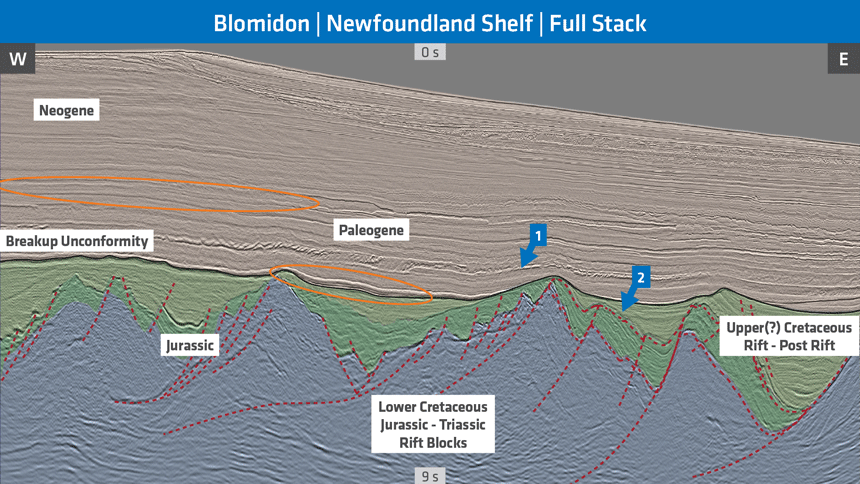PGS and partners (Nalcor & TGS) recognize the exploration and production potential of the Grand Banks region and are committed to acquiring and processing high-quality GeoStreamer 3D seismic data in the area.
The major focus of the seismic program in the Orphan Basin aligns with the industry demand to optimize seismic imaging to completely capture the petroleum system and assess the reservoir potential of the rift play and the overlying passive margin sequences. The broadband multisensor seismic products offer a reliable database for appropriate exploration risk mitigation and potential drilling hazard assessment in this emerging basin.
Read more
- The full article in GeoExpro 'The Greater Orphan Basin: Unraveling Newfoundland’s Emerging Energy Plays'
- A case study from the Orphan Basin 'From Regional Prospect Screening to Reservoir Insight'
- Why are Newfoundland and Labrador hot?
Recent discoveries (e.g. Cambriol and Cappahayden) at the Grand Banks, offshore Newfoundland, reconfirm the increasingly promising hydrocarbon potential along the shelf and slope sections of this emerging north Atlantic basin. These discoveries, along with proven petroleum systems, evolving play concepts and ongoing 3D seismic acquisition campaigns, open-up exciting running room for hydrocarbon exploration and the potential to capture step-out opportunities for near-field developments.
The new multisensor 3D seismic acquisition and processing technologies enabling effective demulitple, offer complete imaging of the rift-related petroleum systems and reveal new opportunities in the overlying Tertiary passive margin sequences.
The Grand Banks shelf platform offshore Newfoundland was affected by three major divergent plate tectonic systems associated with the progressive opening of the Central and North Atlantic, respectively. The eastern Grand Banks shelf edge marks an intermediate stage in the northward migration of the Atlantic system. It is dominated by the separation of Iberia from Avalonia, which completed after a Jurassic to Cretaceous rift stage, documented throughout the Grand Banks subsurface. Regional seismic data from the outer Orphan Basin, provides tectonic evidence for a pull-apart basin that is transient into Riedel-shear dominated arrays of extensional faults, towards the prolific hydrocarbon domain of the Grand Banks distal shelf.

The figure above provides an East-West section from a recent 3D survey in the Orphan Basin that resolves the structural elements of the rift section in conjunction with the imaging of an early syn-rift or pre-rift sediment sequence (Jurassic?) followed by a well-imaged syn-rift half-graben fill presumably Cretaceous of age. The seismic data highlights amplitude responses for potential hydrocarbon reservoirs in the Cretaceous sediments on-lapping onto the structural highs and in late to post-rift deposits draping the structures. The assessment is based on the semi-quantitative analysis of potential exploration objectives, and a quick, automatic horizon interpretation to help screen the interval of interest. The analysis also comprises the passive margin sequence which gradually builds a cover sequence of Paleogene to Neogene of progradational sedimentary wedges as shown on the west side of this image.
Contact a PGS expert
Please contact a member of our Canada team for more information.